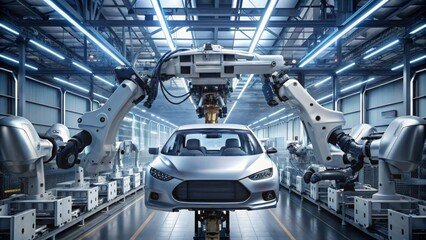Introduction
Welcome to the forefront of engineering excellence – Automated manufacturing is undergoing a revolution fueled by innovative technologies and advancements, reshaping industries and driving unprecedented efficiency and quality. In this article, we explore the latest innovations in automated manufacturing and their profound impact on the engineering landscape.
Outline
- Understanding Automated Manufacturing
- Technological Innovations
- Applications Across Industries
- Benefits and Challenges
- Conclusion
- FAQs
Background
Understanding Automated Manufacturing: Automated manufacturing leverages cutting-edge technologies and systems to automate and optimize production processes, revolutionizing traditional manufacturing approaches. With a focus on efficiency, precision, and scalability, automated manufacturing has become a cornerstone of modern engineering.
Technological Innovations
Discover the latest technological innovations driving automated manufacturing:
- Artificial Intelligence (AI): AI algorithms analyze vast amounts of data to optimize production processes, predict maintenance needs, and improve quality control, enhancing efficiency and reliability.
- Robotics: Advanced robotic systems perform a wide range of tasks with precision and speed, from assembly and welding to packaging and inspection, driving automation and productivity gains.
- Additive Manufacturing: Additive manufacturing technologies such as 3D printing enable rapid prototyping, customization, and on-demand production, revolutionizing design and manufacturing processes.
- Internet of Things (IoT): IoT sensors collect real-time data from manufacturing equipment, enabling remote monitoring, predictive maintenance, and optimization of production processes, leading to improved efficiency and cost savings.
Applications Across Industries
Explore how automated manufacturing is transforming industries:
- Automotive: Automated manufacturing optimizes automotive production with robotic assembly lines, AI-driven quality control, and additive manufacturing, leading to increased efficiency and innovation.
- Electronics: In the electronics industry, automated manufacturing ensures precise assembly of circuit boards, SMT soldering, and automated testing, ensuring high-quality and reliable products.
- Aerospace: Automated manufacturing techniques such as 3D printing and robotics enable the production of lightweight and complex aerospace components with high precision and efficiency.
- Medical Devices: Automated manufacturing processes ensure the production of medical devices with stringent quality and regulatory requirements, improving patient outcomes and safety.
Benefits and Challenges
Explore the benefits and challenges of automated manufacturing:
- Benefits: Automated manufacturing offers benefits such as increased productivity, improved quality, cost savings, and flexibility, enabling industries to remain competitive in dynamic markets.
- Challenges: Challenges associated with automated manufacturing include initial investment requirements, integration complexity, workforce transition, and cybersecurity risks, necessitating careful planning and management.
Conclusion
In conclusion, engineering excellence in automated manufacturing is driving unprecedented innovation, efficiency, and quality across industries. By embracing the latest technological advancements and addressing challenges, industries can unlock new opportunities for growth and success in the ever-evolving engineering landscape.
FAQs
Q: What is automated manufacturing?
A: Automated manufacturing refers to the use of advanced technologies and systems to automate and optimize production processes, enhancing efficiency, quality, and productivity in various industries.
Q: What are the benefits of automated manufacturing?
A: The benefits of automated manufacturing include increased productivity, improved quality, cost savings, and flexibility, enabling industries to optimize operations and remain competitive in dynamic markets.
Q: What challenges are associated with automated manufacturing?
A: Challenges associated with automated manufacturing include initial investment requirements, integration complexity, workforce transition, and cybersecurity risks, necessitating careful planning, implementation, and management strategies to ensure success.
